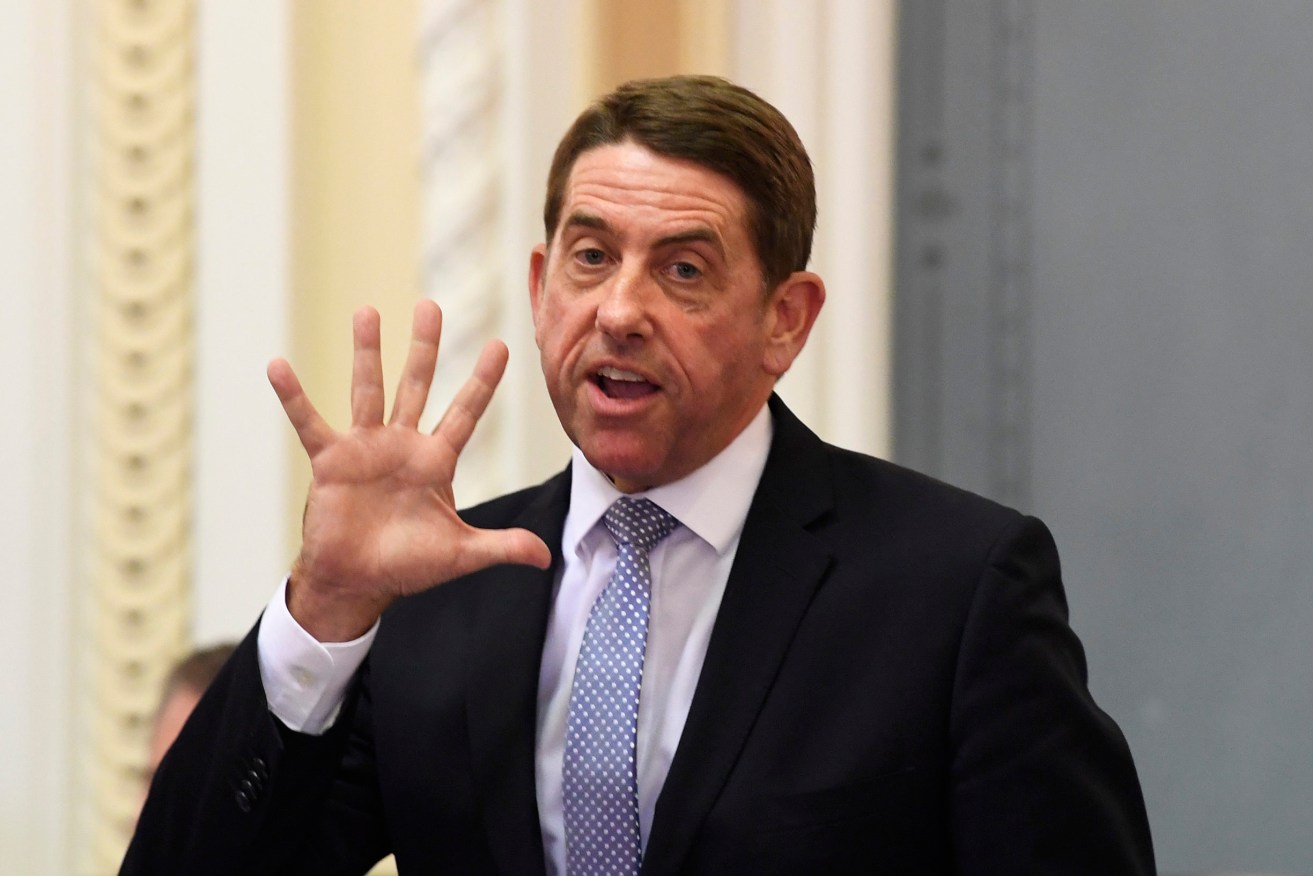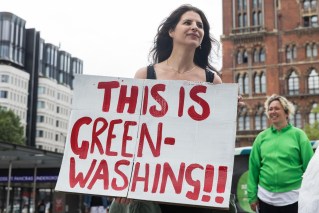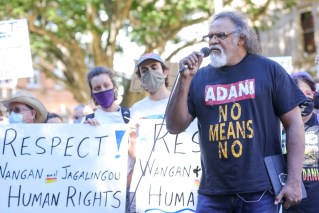A ‘broad and fierce’ hit looms for Labor’s big election hope: Can they turn tap back on?
There would be plenty of times when an unemployment rate below 5 per cent would mean the Government and Queensland were riding high.


Queensland Treasurer Cameron Dick faces a handful of problems as the government heads towards its October election date.. (Photo: AAP Image/Dave Hunt)
An extra 95,000 Queenslanders found a job last year (308,000 since 2019), unemployment is 4.3 per cent, wage growth is at record levels and there is a project pipeline of $200 billion which means business should be jumping.
But the state is not riding high. People are angry over the cost of living and business has imposed something of an investment strike in the state. It’s a long one, too.
Westpac described the headwinds facing the state as “broad and fierce’’ and a further slowdown in growth was unavoidable.
Business sentiment nationally is also at levels not seen since the 1990s recession and household spending has dried up remarkably as interest rates rose.
One faint hope is the Stage 3 tax cuts which ANZ said would add 0.4 percentage points to growth and to the same as a 0.25 per cent cut in mortgage rates. They have already been factored in by the Reserve Bank.
A lot of the issues are national or global including the per capita recession that hit last year, but there are also some serious state issues.
In a recent note, economist Gene Tunny said over the five years to September quarter 2023, private sector capital investment (in real terms) increased by only 5.4 per cent in Queensland compared with an 11 per cent increase nationally.
That’s half and you would have to ask the question why? Is it our regulatory regime or is there a sovereign risk issue created by the Government?
BHP has made it clear that investment in the state is not on its books after the coal royalty hike, but plenty of other mining companies have marched in to fill the gap.
“There’s an urgent need to lift business capital investment and housing construction in Queensland so we can seize the great opportunities the state has to offer,’’ Tunny said.
“This should be top of mind for the State Government. It should be looking at how it can make things easier for potential investors by reviewing and cutting red tape and also engaging with councils on how they can relax their restrictions on business and housing developments.
“We were building nearly 50,000 new dwellings annually in the mid-nineties, but currently, we’re only managing 30,000 to 35,000 per annum.’’
Tunny also pointed out that the state’s manufacturing sector had barely grown since Labor came to power in 2015 and was going backwards in relative terms.
Even so, the Queensland economy is still doing a lot better than some of the other states, although Commsec has it ranked as fourth on its over-the-decade comparison report.
Westpac’s recent report on the state economy has Queensland slowing down, but not as much as some of the other states.
It said the state’s domestic economy (excluding exports) had dipped only slightly between the September quarter in 2022 and the June quarter of 2023 whereas nationally it had nosedived from 6.8 per cent to 2.2 per cent.
Queensland’s gross state product is pegged at 3 per cent this financial year and next. That’s good considering the national mood. Per capital consumer spending is disastrous at -1.3 per cent (better than NSW and Victoria).
“The resilience in Queensland’s economic performance over the last twelve months stands in stark contrast to most other states,’’ Westpac said.
“Where Queensland‘s state economy has stood out, however, is in the strength of housing and resilience in public demand.
“Benefiting from a sizeable backlog of work, dwelling investment has sustained a clear uptrend in Queensland over the last twelve months (+6.1 per cent).
“At 0.9 per cent, consumption growth has slowed abruptly over the past year, with cutbacks in spending clearly evident in discretionary categories – household contents (–9.1 per cent) and recreation/culture (–3.8 per cent) of note.’’
Westpac said new housing construction had continued to forge ahead (+14.8 per cent), which was “an encouraging development in the context of rapid population growth and a growing need for further housing capacity.’’
In the run-up to the October state election the Labor Government will mostly have to deal with rising unemployment, but interest rates should hold steady with banks tipping a cut in September.
It appears that the cost-of-living crunch has trumped any good news in the economy and the electorate is not in a forgiving mood.
That isn’t surprising when you consider that the average mortgage in Queensland cost an extra $25,000 last year.
However, house prices continue to surge (+10 per cent), along with rents (+11 per cent).
In Queensland, the economy is about the only thing currently in the Government’s favour, but how long can that last? And is it really as good as the Government makes out?
People voted with their feet during Covid and moved into Queensland because of the relative freedom which meant businesses could still operate.
That led to a boom in interstate migration and our labour market (in work or looking for work) increased by an incredible 100,000 in 2023 and cracked 3 million.
That was good for business because it had workers to draw on. The Government also benefits from increased tax revenue, but it is likely to add to more competition for jobs and the state’s unemployment level (4.3 per cent) is already well above the national level (3.9 per cent).
It’s not unusual for the state’s jobless figure to be higher than the national one but in an election year it’s not a good look and was likely to keep rising through the year.
Westpac said Queensland’s project pipeline has been lifting, centred on key industries such as resources, transport and health.
“Looking forward, there are still a number of new construction projects and upgrades associated with the Olympics that are yet to enter the pipeline or begin commencement.
“The large backlog of construction projects will continue to deliver an underlying level of support over the medium-term and provide a worthwhile expansion of Queensland’s housing and capital stock over time.
“That said, current headwinds facing the economy are broad and fierce. Further near-term slowing in growth – centred on the consumer – will be difficult to avoid.’’












